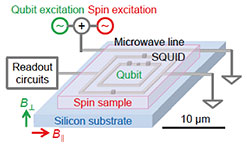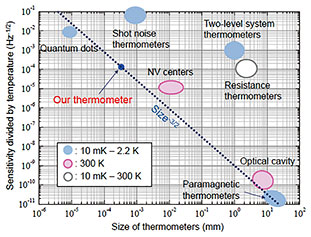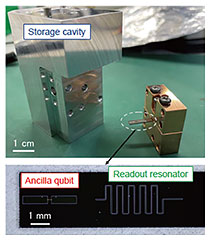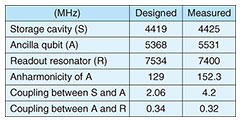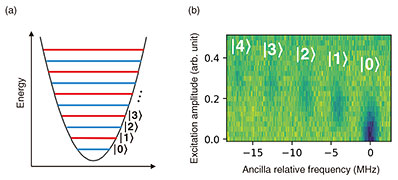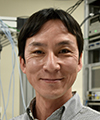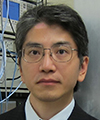 |
|||||||||||||||||||||||||||||||||||||||||
|
|
|||||||||||||||||||||||||||||||||||||||||
|
Feature Articles: Toward Quantum Technology Innovation Vol. 21, No. 6, pp. 29–35, June 2023. https://doi.org/10.53829/ntr202306fa3 Quantum Information Technology Based on Superconducting Quantum CircuitsAbstractThe research on superconducting quantum circuits has expanded greatly, from applications of magnetic field sensors using superconducting quantum interference devices to the development of quantum computers based on superconducting quantum bits (qubits). Superconducting quantum circuits have been progressing rapidly, and as examples of applying these circuits to quantum sensing, this article introduces electron spin resonance spectrometers having high sensitivity and high spatial resolution and an ultrasmall high-sensitivity thermometer operating at extremely low temperatures. As an application to quantum computing, this article also introduces a bosonic qubit that executes quantum error correction using the many degrees of freedom within a superconducting resonator. Keywords: superconducting quantum circuits, quantum sensing, quantum computers 1. Superconducting quantum circuitsSuperconducting quantum circuits*1 are being studied extensively from basic to application research by taking advantage of the degrees of freedom in their circuit design. We first introduce an example of basic research. The origin of research into superconducting quantum circuits lies in the fundamental question: To what extent can quantum mechanics that holds in the microscopic world be applied to macroscopic systems? To answer this question, we conducted an experiment using a superconducting flux qubit*3 and demonstrated that a qubit loop can achieve quantum superposition in which a trillion electrons per second are flowing in a clockwise current state and counterclockwise current state [1]. This result indicated that quantum mechanics holds in macroscopic artificial structures on a micrometer order as well as in microsystems consisting of electrons and atoms. Next, through collaborative research with the National Institute of Information and Communications Technology (NICT), we devised a circuit design that can achieve strong coupling between an artificial atom and light, which cannot be achieved in ordinary atom/light coupling. This achievement has opened the door to the new field of cavity quantum electrodynamics*4. We used a superconducting artificial atom (superconducting flux qubit) and microwave photons to achieve a deep-strong coupling regime, in which the coupling energy of both is greater than the energy of each, and measured a previously unknown physical phenomenon [2]. From the above studies, superconducting quantum circuits are breaking new ground in basic physics research, but there is also much activity in application research. The most well-known example of such applications is the superconducting quantum computer being developed by Google, IBM, University of Science and Technology of China, RIKEN, and other research institutions. The superconducting quantum circuits used for this application are qubits called transmons, which can be used as the basic elements of a quantum computer since their transition frequency remains nearly unchanged under an external magnetic field and their coherence time*5 is long. However, the transition frequency of a superconducting flux qubit changes significantly under an external magnetic field, so its application to magnetic field sensors is expected. Progress is also being made at D-Wave Systems, National Institute of Advanced Industrial Science and Technology (AIST), and elsewhere in applying superconducting flux qubits to a quantum annealer*6 by using the tunability of the transition frequency. In this article, we introduce local electron spin detection and a hybrid thermometer based on flux qubits as examples of quantum sensors. We also describe the prospects for a new type of quantum bit (bosonic qubit) that uses a transmon as an ancilla qubit.
2. Magnetic field sensorsA superconducting flux qubit can detect changes in the magnetic field penetrating a loop with high sensitivity by measuring the transition frequency between quantum levels. As described below, such a magnetic field sensor is sensitive enough to detect a magnetic field created by a small number of electron spins. Since the loop size of a flux qubit is about several micrometers, it also enables magnetic-field measurements with high spatial resolution. Taking the above features into account, NTT began research on high-sensitivity, high-spatial-resolution electron spin resonance (ESR) spectrometers. Since ESR can be used to obtain information on electrons that are not paired with each other (unpaired electrons) in a substance, it has become an indispensable analytical technique in such fields as material science, solid state physics, drug discovery, and medical care. A typical ESR spectrometer operates by placing a several-milliliter spin sample in a cavity and measuring the microwave response at the cavity’s resonance frequency. Since the interaction between the cavity and one electron spin is weak, it is necessary with this technique to include about 1013 electron spins in the sample to measure an ESR signal. The ESR signal is averaged over the entire spin sample, so local information cannot be obtained. In contrast, a local ESR spectrometer using superconducting quantum circuits consists of a sensor, such as a flux qubit or superconducting quantum interference device (SQUID), and a readout circuit to extract the information from the sensor (Fig. 1). On irradiating the electron spin sample with microwaves, the magnetic field created by the spins changes and the sensor detects that change. We apply magnetic field B⊥ on the microtesla (µT) order for sensor control and magnetic field B|| on the millitesla (mT) order for electron spin polarization. In this spectrometer, the irradiation of microwaves is executed from a wideband microwave line for electron spin detection without a resonator, so there is no limitation to the frequency range in which ESR spectra can be measured. In other words, this spectrometer makes it possible to measure ESR spectra in a broad parameter region while sweeping the device with frequencies and magnetic field B|| to therefore obtain even more information from the measurement target [3].
Next, we introduce our efforts to date in improving the figure of merit of local ESR spectrometers. At the beginning of this research, we used SQUID as a magnetic field sensor and a SQUID switching readout circuit to extract the sensor information. With this configuration, we succeeded in detecting electron spins originating in erbium atoms within an optical crystal (Y2SiO5) at a sensitivity of 106 spins/√Hz [4]. We then replaced SQUID as the magnetic field sensor with a flux qubit and changed the readout circuit from a SQUID switching readout circuit to a switching readout circuit using a Josephson bifurcation amplifier*7. We achieved a sensitivity of 20 spins/√Hz, resulting in an improvement of approximately five orders of magnitude [5]. By making the loop size of the magnetic field sensor smaller, we also succeeded in decreasing the detection volume from 150 to 6 fL. These results along with the figure of merit of a sensor using a two-dimensional superconducting resonator from other research groups are shown in Fig. 2.
3. ThermometersWe have succeeded in developing an extremely small thermometer (Fig. 3) and making precise measurements of temperature at very low temperatures by using an electron spin ensemble within a nanodiamond as a thermometer and a flux qubit as an electron spin detector [6].
A compact temperature sensor has a small heat capacity, and the quantity of heat flowing into the thermometer from the measured system is small. This enables fast response speeds and measurements that suppress the back action to the measured system. Such a temperature sensor can also improve the spatial resolution of temperature measurements, which suggests new applications as in measuring the spatial distribution of temperature in a very small region. However, developing a compact temperature sensor and achieving high sensitivity at the same time is difficult. The reason for this is as follows. Temperature sensing involves measuring the change in temperature of the amount of physical material making up the thermometer, but the amount of material decreases when making the thermometer smaller, which lowers measurement sensitivity. To solve this problem, we achieved quantum sensing on the basis of a hybrid system that couples a flux qubit and paramagnetic electron spins within a nanodiamond (Fig. 3). Various types of defects exist within a nanodiamond including nitrogen-vacancy (NV) centers*8 and P1 centers*9 that confine an electron. This electron has spin, and applying a magnetic field from the outside creates a Zeeman split in which energy changes in accordance with the spin state. The energy level of an electron spin system is determined by the magnetic field as well as by hyperfine interaction with nuclear spin and the energy of magnetic anisotropy that appears when there is spin greater than or equal to one. Under thermal equilibrium, the occupancy of each spin state is determined by temperature and energy, so a nanodiamond gives rise to magnetization dependent on temperature. This change in magnetization can be measured as a change in the magnetic flux penetrating the flux qubit (Fig. 3). On converting the magnetic-field sensitivity of the flux qubit to temperature sensitivity, we confirmed a high-sensitivity figure of merit at 1.3 μK/√Hz at the base temperature of 9.1 mK in a dilution refrigerator. On comparing the figure of merit for various thermometers (Fig. 4), the above results enable the development of a compact and high-sensitivity thermometer. Commonly used resistance thermometers must be calibrated for all temperature regions, but the temperature change associated with the measured magnetization can be theoretically predicted, which means that measurements across all temperature regions can be conducted by calibrating at only one temperature point. There is also a type of sensor using a single quantum dot that can serve as a compact thermometer, but our thermometer has the advantage of enabling the measurement of lattice temperature, not the electron temperature, as with the quantum dot thermometer. While the temperatures that can be measured with our thermometer are extremely low, it is expected to contribute to measuring extremely low temperatures at the region where accurate measurements have been difficult due to slow response caused by thermometer self-heating and large heat capacity.
4. Bosonic qubitsResearch and development of superconducting quantum computers is progressing steadily, as reflected by the 2019 announcement from Google that it had proven “quantum supremacy” with a 53-qubit processor that outperformed a conventional supercomputer [7] and the 2022 announcement from IBM of a 433-qubit processor. However, a massive number of qubits will be necessary to achieve a practical and fault-tolerant universal quantum computer. This is because redundant qubits are needed for quantum error correction since qubits are vulnerable to external noise and errors occur frequently. For example, a trial calculation indicated that 20,000,000 qubits would be needed to factor a 2048-bit number [8]. In current designs, about 1000 qubits can be arranged on a chip, and any greater number would require new technologies such as for inter-chip wiring. There would also be a need for breakthroughs in high-frequency wiring to control such a massive number of qubits, refrigeration technology, etc. The bosonic qubit is a technology that is attracting attention as a means of satisfying the need for a massive number of qubits. This technology encodes quantum information into an infinite number of energy levels within a superconducting cavity and uses that redundancy to execute quantum error correction. It uses a transmon as an ancilla qubit to prepare complex quantum states in the cavity. A resonator is needed to read out the transmon state. The components of this bosonic qubit are shown in Fig. 5. We carefully designed the frequencies of each component (storage cavity, ancilla qubit, readout resonator) and the coupling strength between components (Table 1) and successfully identified photon number states*10 in the storage cavity (Fig. 6). This is the first step toward accessing each photon number state and preparing complex quantum states.
5. OutlookThis article introduced local ESR spectrometers, an ultrasmall thermometer, and bosonic qubit as examples of applying advanced superconducting quantum circuits to quantum information technology. Our objective in developing local ESR spectrometers is to enhance sensitivity to the level of detecting a single electron spin using a long-lived flux qubit [9] and a readout circuit applying quantum electrodynamics. We also plan to expand our measurement targets with this spectrometer beyond solid-state electron spin samples to biological electron spin samples such as neurons and cell lines. Our objective in researching bosonic qubits is to encode quantum information in a superconducting cavity using the lowest order binomial code*11, a bosonic quantum-error-correcting code. We will then seek to achieve a long-lived bosonic qubit beyond its cavity lifetime by quantum error correction, in other words, to reach the break-even point.
References
|
|||||||||||||||||||||||||||||||||||||||||









